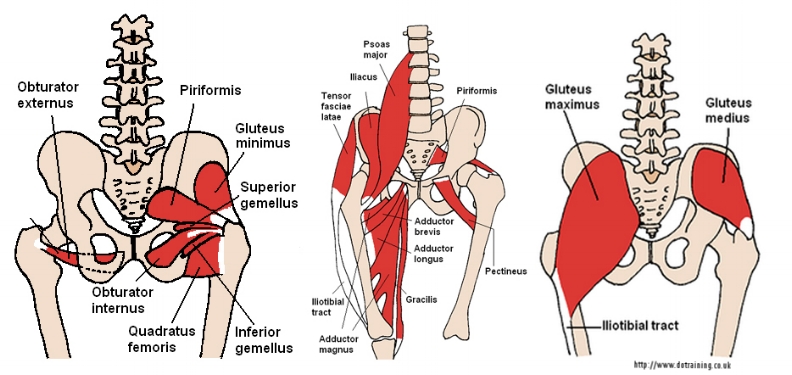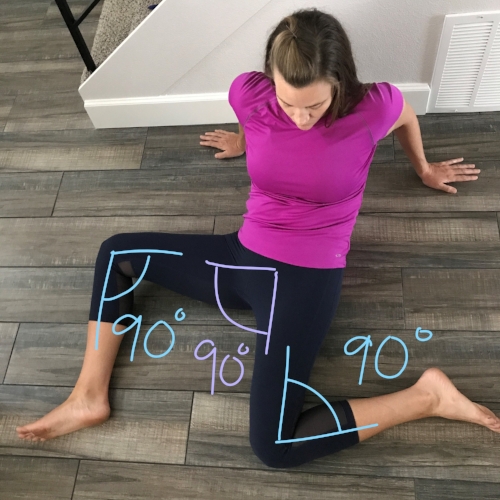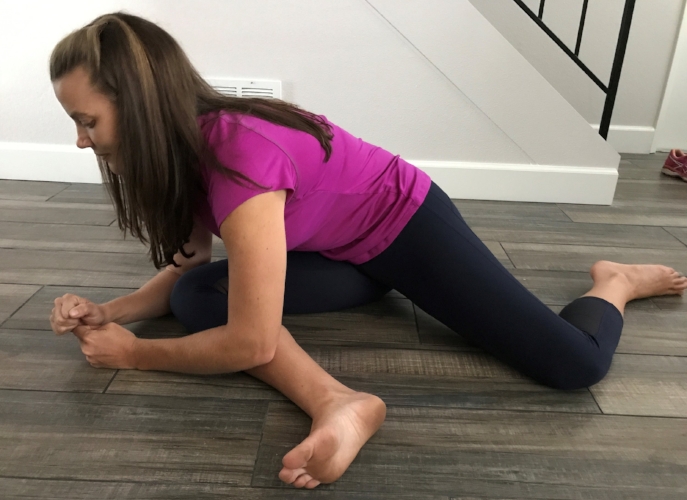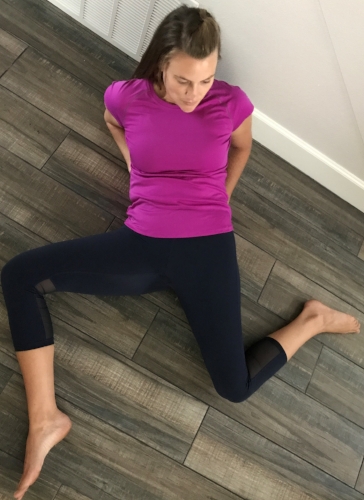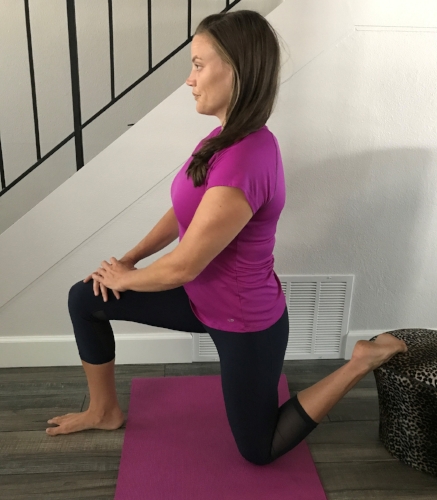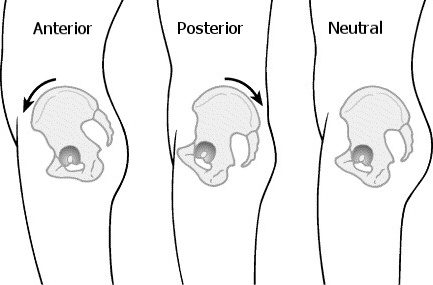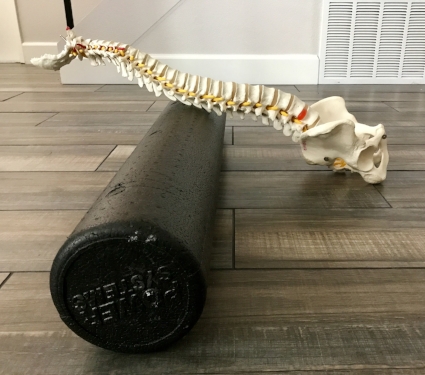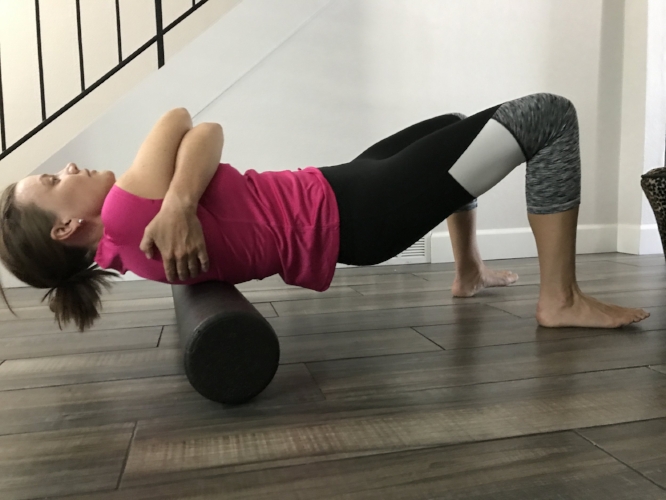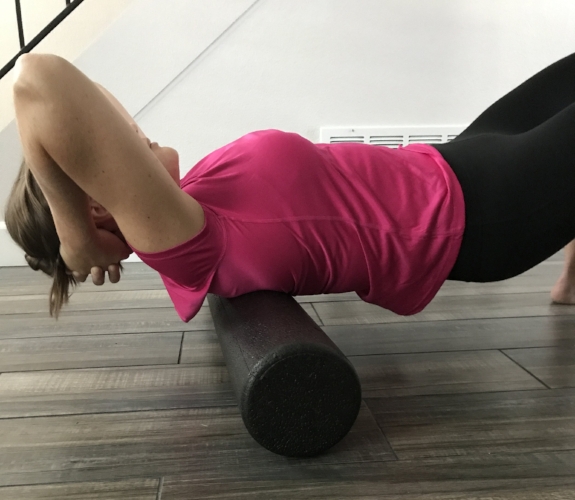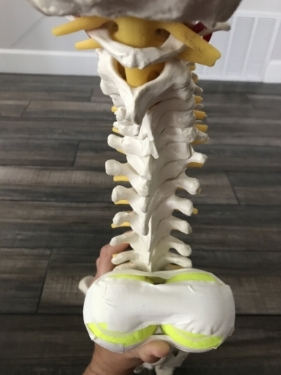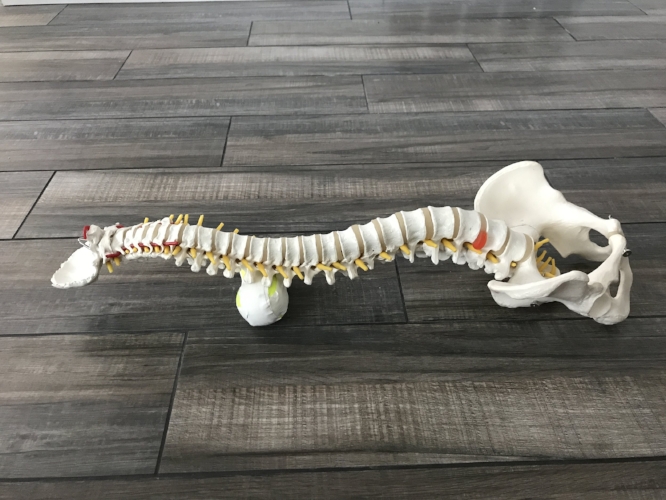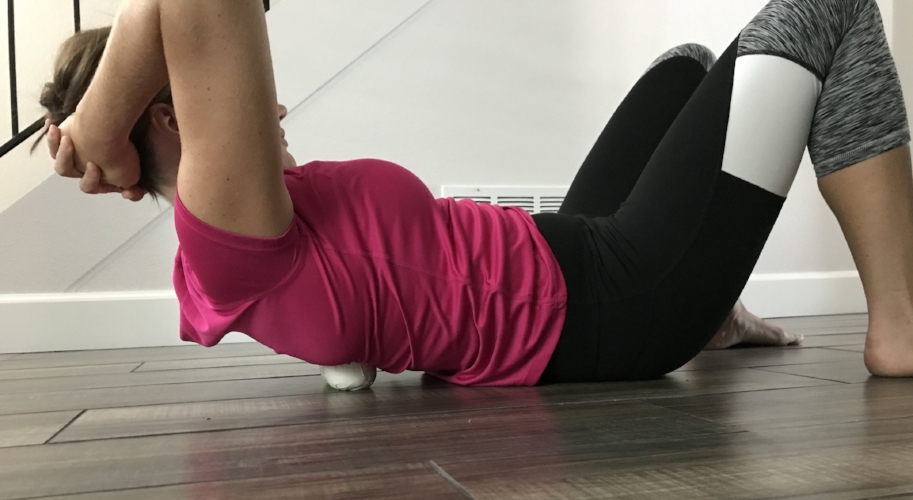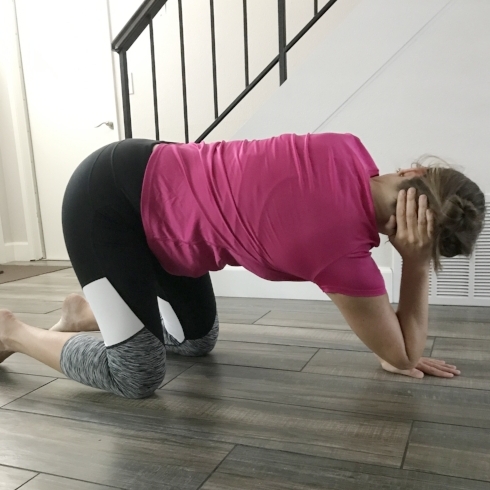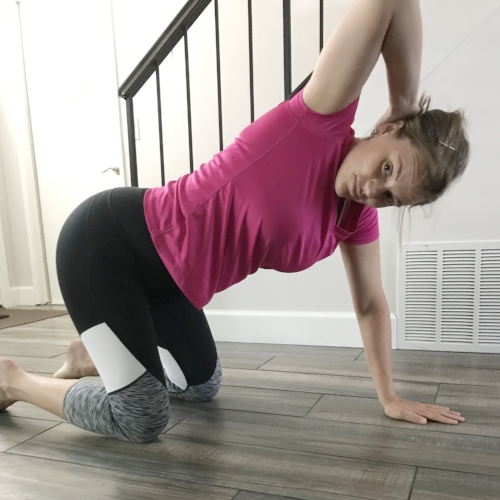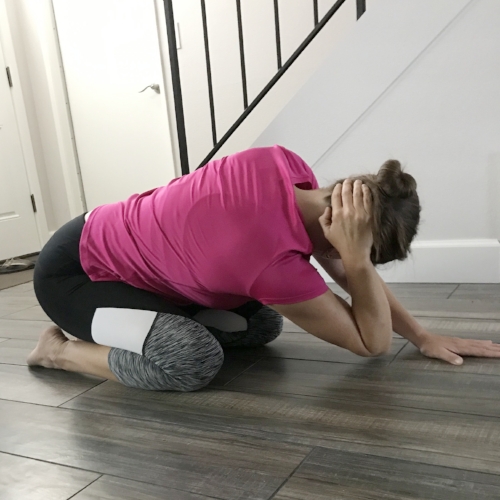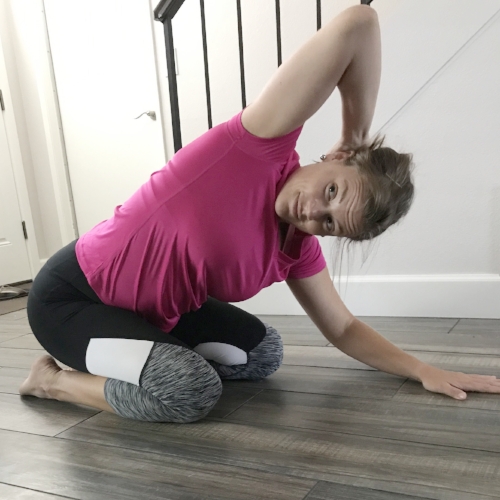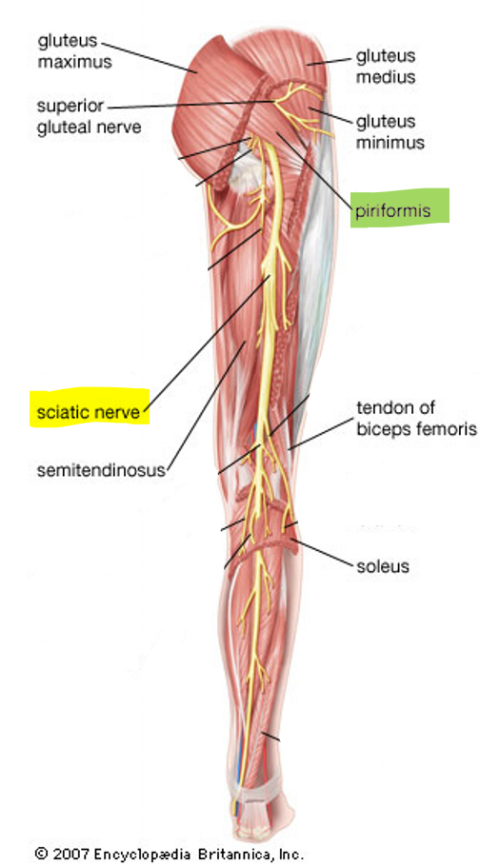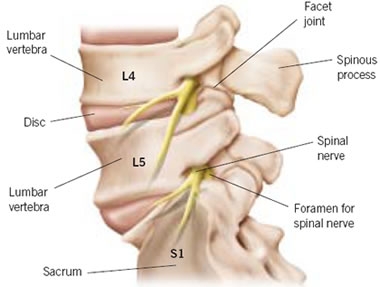Last blog we talked about how your low back pain may not be coming from your low back! Quick refresher: Sitting all the time at a computer/desk job can leave us with hyper-kyphotic (hunch back) posture. Sitting can also lead to tight hip flexors and lack of movement in your hips and pelvis. The idea is that if your thoracic spine and hips can’t move the way they are supposed to, your lumbar spine (low back) will try to compensate and do the work for them. That means that your low back is working over-time!
Last post we covered mobility drills for your thoracic spine, and so this time we will talk about how to open up your hips.The muscular around your hips/pelvis is quite extensive. Check out the image below to get an idea of the muscles we are targeting with these stretches.
90-90-90 Hip Stretch
The easiest way to start the 90-90-90 hip stretch is to start sitting on the floor with both legs in front of you. Have your heels on the ground and your legs bent to about 90 degrees. From there, let both knees fall to the right side. Your right leg will likely be close to the ideal position, but you may have to move your left leg back a bit but keeping your knees bent at 90 degrees. You want your legs to make ALL the right angles. (Ignore that my left knee may be a bit smaller than 90 degrees.)
Depending on how tight your hips are, you may already start feeling a stretch. When moving into the next stretches of this complex, only stretch as far as feels comfortable. This should never feel painful!
From this 90-90-90 position, lean forward on your front leg (your right leg). As you lean forward, you can support yourself on your hands/elbows. When you do this, you should feel a deep stretch in the posterior muscles on your right leg and gluteal region. You may also feel some stretches other places. It depends on where exactly your tightest muscles are. If you are familiar with yoga, this should feel similar to pigeon pose.
Next slowly come back to your seated 90-90-90 position. From here try to square your shoulders so you are directly facing your back leg (your left leg). I think of trying to line up my sternum with my leg. Then slowly lean back until you feel a good stretch in the front of your left leg. Again you can support yourself on your hands/forearms depending on your flexibility. You should feel a stretch on top of your left leg/front part of your hip. You may feel stretches other places, too, this again depends on where your tightest muscles are.
Slowly come out of this stretch, then switch your legs, and repeat!
Modified Lunge
The modified lunge stretch is just that! For this one, you need a prop! It can be a stair, sofa, or chair (leopard print optional)! You may also want to do this on softer floors or put a yoga mat down for padding. To get into this modified lunge, rest the top of your foot on top of your prop, then drop into a lunge position. Having your foot elevated, will increase the stretch down the font of your leg.
Focus on kneeling really tall. You should also focus on having a posterior pelvic tilt to feel the stretch more. This means make sure that you are NOT sticking your butt back and out along with letting your abdomen go forward. To initiate a posterior pelvic tilt, I think of pulling my belly button in trying to approximate it to my spine then moving my butt down and forward. To better understand pelvic tilts, check out the image below of the side view of the pelvis.
Make sure to do each of these stretches on BOTH sides! I recommend holding each stretch for at least 30 seconds and going through these 2-3 times.
Questions? Hopefully these stretches will help with your hip mobility. We can also always go through them during your next appointment. Don't have a next appointment yet? Call us today to set one up!

